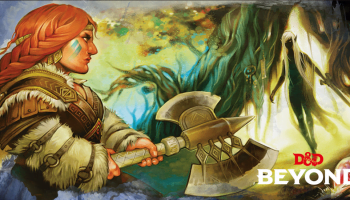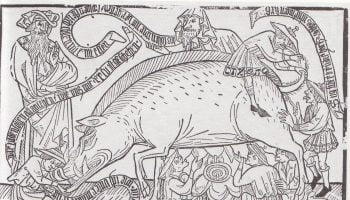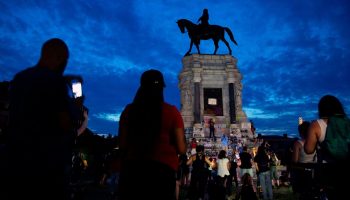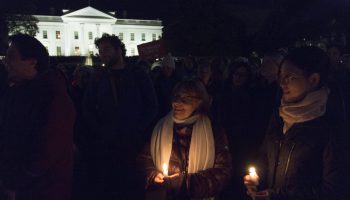Part XXVIII in our ongoing series on Race, Racism and the Middle Ages, by Paul B. Sturtevant. You can find the rest of the special series here.
The year was 1096, and the drumbeats of war were echoing all throughout the Rhine valley. This wasn’t, on its face, that unusual; small wars among petty landowners were part of the cultural landscape of the high Middle Ages. But this time, it was different. It was different because only a few months before, in November of 1095, Pope Urban II had held a council in the center of France, and given a speech. Everyone’s account of the speech differed; nobody (as far as we know), wrote it down at the time. And afterwards so many different preachers carpeted the countryside—each spreading their version of the Pope’s message—that the Pope’s exact words didn’t matter all that much, even then. But the core message was clear: take up arms, go East, conquer Jerusalem, and all your sins will be forgiven.
The results of the Pope’s speech were immediate, and shocking: thousands of people from all walks of life armed themselves and went East toward Constantinople, and then (those who survived) to the Holy Land. They went seeking salvation, and they were spoiling for a fight. Only centuries later was this given a name: The First Crusade. And the Jews of Germany suddenly had good reason to be very afraid.
The Rhineland Massacres

Anti-Jewish violence had sprung up occasionally in Western Europe for the previous three hundred years. But these anti-Jewish attacks were all fairly localized and small-scale (not to downplay the horror of any violence of this kind, of course).
The First Crusade changed that.
The anti-Jewish violence that erupted in 1096 in response to Pope Urban II’s call has been given several names by historians. But largely, they are called “The Rhineland Massacres.” The broad brushstrokes are this: as clergymen travelled from place to place preaching the Crusade, several of them went off-script. Instead of (or perhaps in addition to) preaching the Crusade, they starting preaching violence against the Jews. One of them, a fanatic Cistercian monk named Rudolf, was particularly effective at whipping would-be crusaders into an anti-Semitic frenzy.
And so mobs of crusaders swept over France and Germany travelling from city to city looking to murder Jews. Three particularly large gangs—two led by priests named Folkmar and Gottschalk, and another led by a particularly nasty person named Count Emicho of Leiningen—spread across the country and massacred all the Jews they could find.
This wasn’t part of Urban II’s call. But neither did he condemn the violence against the Jews. And to some degree, you might think that the Pope should have anticipated that this might occur. When calling the Crusade, the Pope issued a “plenary indulgence”—total forgiveness of all sins (probably familiar to fans of the film Dogma)—to those who went to fight:
Whoever for devotion only, not for the acquirement of honor or of wealth, shall proceed to Jerusalem to free the Church of God, to him let that expedition be accounted in lieu of all penance.
Those people who took the Pope at his word had been offered, essentially, a religious clean slate. And some may have taken this as leave to commit any sins they wanted along the way. And more, the Pope had just represented an inherently violent venture against non-Christians as a holy one. So, for some, this gave the structural anti-Semitism and lingering anti-Semitic resentments teeth and a blind eye from none other than the Pope himself, speaking, ostensibly, on God’s behalf.
As a side note, to some degree, this is why “anti-Semitism” is a good word to use here, since the word puts Muslims and Jews in the same hate-filled basket. Not to be glib, but we actually have several accounts of Crusaders’ outlooks roughly being “why should I have to walk thousands of miles to kill God’s enemies when I’ve got plenty of them right here? And I owe these ones money!”
Shifting Focus

Thus far in our series we’ve explored the details of terrible anti-Semitic prejudice, rhetoric, and violence. So, I’m not going to go into yet another description of those horrors. I’m not going to give you a biography of Rudolf or Count Emicho; frankly, they don’t deserve our time. I’m going to tell you about the resistance.
It’s important, in moments of great tragedy, not just to focus on the perpetrators or the victims. In Nazi Germany, it is of course appropriate to talk about the evil of the Nazis and the millions of lives they took. But to leave the story there would do a great disservice to those heroes who resisted—from the Jews of the Warsaw ghetto who fought back against their oppressors, to the non-Jews who opened their homes and, in so doing, risked—and sometimes gave—their lives protecting their Jewish friends, neighbors and fellow people.
The nation of Israel gives a special honorific to those people. They are the “Righteous among the Nations.” So, who were the medieval Righteous Among the Nations?
Finding them isn’t easy. Little is written about some of them—and for a great many of them, nothing is written at all. The Crusader chronicles that cover the German pogroms don’t spend much time on them. And even the chronicles written by the Jewish survivors and their descendants often don’t focus on them, since their core purpose was to preserve the tales of the heroic Jewish martyrs who had died in the onslaught. Neither of them were especially interested in telling the stories of either the Jewish survivors, or the Righteous Among the Nations who stood against the tide.
But they’re there.
Reading a Chronicle against the Grain
Finding these stories as a reader sometimes means reading history “against the grain”—intentionally interpreting an historical text in a way that’s different from what the original writer would have expected.
Literature scholars are very good at this. They’ve been disregarding the intentions of the author at least since French Philosopher Roland Barthes declared the proverbial “Death of the Author” in his essay of that name in 1967. But this is somewhat newer and a bit more fraught for historians.
Reading history against the grain can be fairly dangerous to do if you’re not very, very careful; at an extreme, reading historical texts in such a contrarian manner can give rise to all manner of historical misinterpretations, which can give (and have given) rise to wild conspiracy theories. But if done carefully, sometimes you can reanimate just a few of those people who their contemporaries didn’t particularly care to record, or who they actively tried to erase from history.
For one example, let’s turn to the city of Cologne.
One chronicle of the events of 1096 has this passage:
It was on the fifth of Sivan, the eve of Pentecost, when the news came to Cologne […] The enemy began to slay them from Pentecost until the eighth of Tammuz. Upon learning of the annihilation of the communities, each Jew fled to a Gentile acquaintance and remained there during the two days of the festival. On the morning of the third day, there was a great clamor; and the enemy arose against them and broke into the houses, looting and plundering. They destroyed the synagogue and removed the Torah Scrolls, desecrating them and casting them into the streets to be trodden underfoot. […]
That very day they found a pious man, named Issac, son of Elyakim, who had gone out of his house; the enemy seized him and brought him to their house of idolatry [note: probably a Church]. He spat at them and at the object of their idolatry and he reviled and ridiculed them. And they slew him then and there in sanctification of the Name of God, because he did not desire to flee, out of respect for the festival, and also because he was happy to accept the judgement of Heaven.
They also found a distinguished woman, Mistress Rebecca. The enemy encountered her as she left her house bearing gold and silver vessels concealed in her sleeves, intending to bring them to her husband, Solomon, who had left his house and was now in the home of a Gentile friend. They took the money from her and slew her, and there the righteous woman died in sanctity.
At the same time another woman, Mistress Matrona, and the rest of the community were saved in the homes of acquaintances to which they had fled. They remained there until the bishop went to his villages on the tenth day of Sivan and dispersed them amongst his seven villages, in order to save them.
That was from the Chronicle attributed to Samson son of Simon, written in Hebrew around the year CE 1140. There’s a lot loaded in this passage, even though this covers just a few small episodes.
A little background: mobs of crusaders had already begun attacking Jews in the area. At this point, two cities, Worms and Mainz, had already seen brutal massacres. That’s what the author is referring to when he says “Upon learning of the annihilation of the communities.” The Jews had heard what was going on. Then the attacks came to Cologne, and the mob desecrated the synagogue there.

But thankfully, unlike in the other cities, in Cologne there are only two deaths reported: that of Issac bar Elyakim and of Mistress Rebecca. This is, presumably, because the attackers couldn’t find the rest of the Jews. The remainder saved themselves by taking refuge within the community of Christian friends and neighbors—people who clearly stood in opposition to the violence. The resistance was real. Allies put their homes and lives on the line stepped up; the Jews and their allies, almost entirely, managed to outwit the mob.
It is clear that this represents longstanding relationships between the Jews and Christians of Cologne. In the accounts we have of other cities, we know that Jews often paid Christians to protect them. There is no indication of that here.
The bishop named in the chronicle—who we know to have been Archbishop Hermann III—had a good enough relationship with the Jews who lived there that he was able to find those hiding in the city, even when the mob could not. And the Jews trusted him with their safety; they agreed to spread out among several of the fortified villages under his control. Clearly, within those villages, there were people who the Archbishop could be confident would be willing, and able, to hide the Jews of Cologne. In short, it shows that anti-Semitism—especially the violent anti-Semitism preached by Rudolf and enacted by Emicho—was far from universal. We have no way of knowing what proportion of people fell to each side, but we do know that there were enough dissenters to the violence to carry out the Archbishop’s plan.
Sadly, the plan didn’t work. The chronicle then goes on to describe how six of the seven villages were attacked by the mob, with many of the Jews hiding there either being killed, forced to convert to Christianity, or martyring themselves as a final act of resistance.
We don’t know exactly how they were found out; the chronicles don’t tell us. Maybe they were ratted out by someone in Cologne. Maybe they were sold out by someone in the villages, or someone in the Bishop’s employ. Maybe the Crusaders just went looking from village to village. I’ll leave that to a novelist’s imagination.
But the faintest of silver linings is that, for some Jews, the plan did work. Unlike in Mainz or Worms, one-seventh did survive. And while the Hebrew chronicle takes great pains to commemorate the lost, it also unintentionally honors their ability to survive, and those among the Christians who helped.
What This Means
We tend to think of people in the past—especially in the medieval past—as being intellectually and culturally monolithic; all believing the same thing, and thinking the same way. When we do, that’s a failure of empathy on our part. Racists and demagogues often try to paint the world in terms of a monolithic “us” versus a monolithic “them”, but no matter the age, there is always complexity, disagreement, and resistance.
Throughout our series, we’ve shown that over the Middle Ages, pervasive and recurring anti-Semitism became knit into much of the fabric European culture—especially in the later Middle Ages. But then, as now, it would be a mistake to assume that every European Christian subscribed to that idea.
For example, at this point in history, the Catholic Church’s hierarchy—which obviously has a very spotty reputation when it comes to anti-Semitism—was actually staunchly against the anti-Jewish violence. There were Archbishops and priests who worked against the Crusading mobs just as there were clergymen who led them. Until the end of the thirteenth century, the Papacy was typically a supporter of the Jewish people (with a few notable exceptions). But at the lower echelons, Church officials often tolerated or encouraged the abuse of Jewish people. It’s complicated.
As such, the Middle Ages should not be regarded as a time of universal, un-challenged anti-Semitism, but as a time of vast intractable disagreement among Europe’s Christians over the Jews living in their midst. This does not mean that anti-Semitism in the Middle Ages was not as bad as scholars have described. As many members of marginalized groups today will attest, it is deeply oppressive to live in a society that is openly debating whether you have a right to exist. What this does mean is that the Middle Ages may have, in some ways, been more like our current era than we wish to believe. Those among us who strive for a better, more just world can look there and find not just villains, but heroes too.
The Public Medievalist does not pay to promote these articles, so we would love it if you shared this with your history-loving friends! Click to share with your friends on Facebook, or on Twitter.




